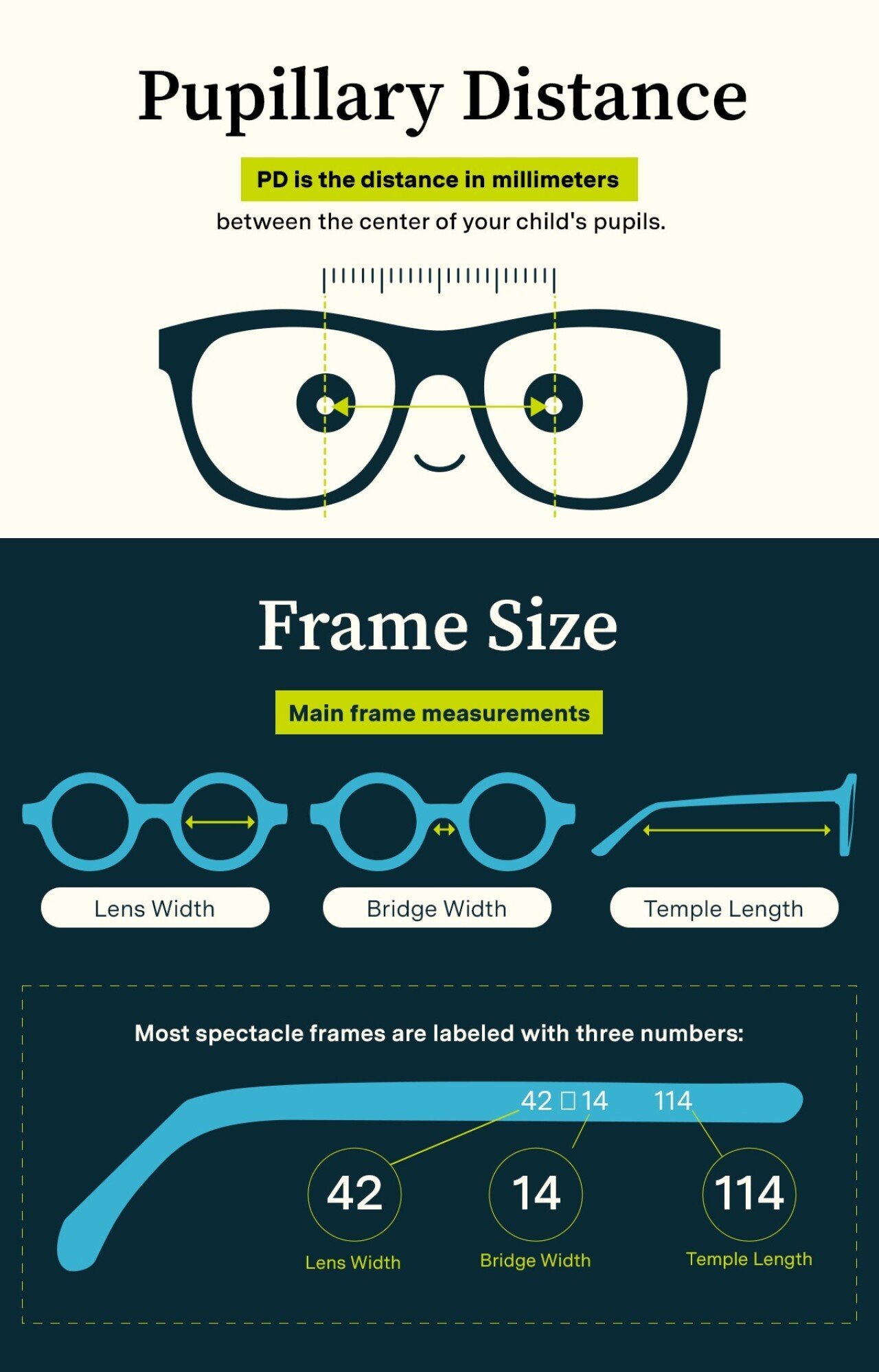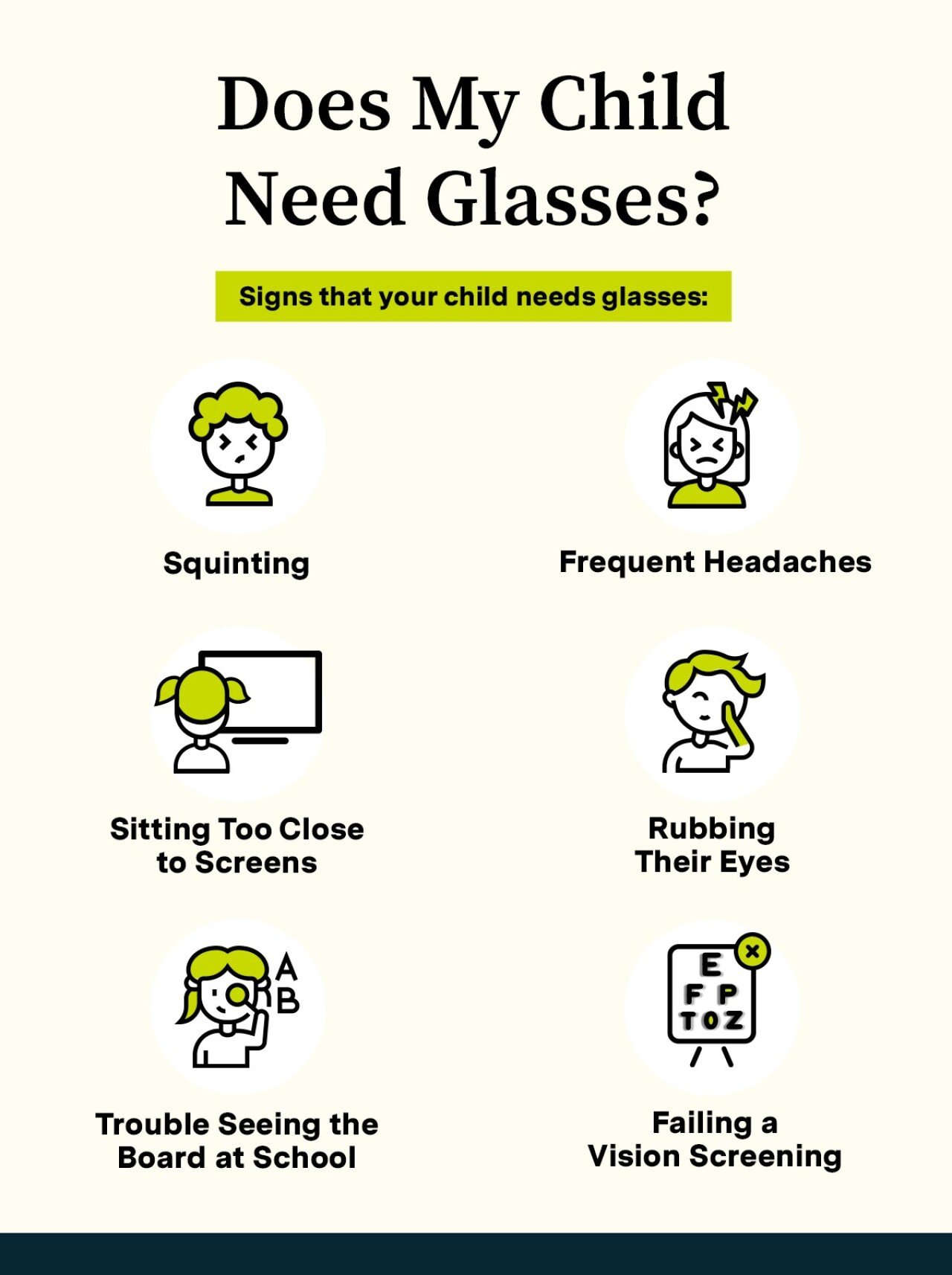How to choose glasses for kids
Lifestyle

Audio By Carbonatix
12:30 PM on Wednesday, October 8
By Tom Determan, O.D. for Eyemart Express, Stacker
How to choose glasses for kids
With the right pair of glasses, your child can experience the world with clarity, comfort and confidence. But the vast range of frames and lenses available leaves many parents feeling overwhelmed. This guide from Eyemart Express will walk you through everything you need to know to make the best eyewear choices for your child.
1. Get a Prescription
Your child‘s eyeglass prescription is the starting point when shopping for glasses. Have an eye care professional — an optometrist or ophthalmologist — examine your child's eyes and provide an updated lens prescription before you buy a new pair of glasses for optimal vision support. Children's eyes can change fast, so annual eye exams with a qualified professional are recommended for monitoring vision changes, getting the right prescription and updating it when necessary.
Also, note the difference between a vision screening and a comprehensive eye exam. A pediatrician or school nurse can do basic checks to screen for vision problems. However, only an eye care professional can conduct a detailed assessment of eye health, diagnose conditions like myopia, amblyopia or strabismus, and prescribe the ideal lenses for your child's eyes.
2. Understand the Prescription and Pupillary Distance
The prescription and pupillary distance (PD) measurement are the most important factors in choosing lenses and frames to help your child see clearly.
A prescription determines the strength and type of correction your child needs from their lenses, and it's important to choose frames that support those lenses. An optician can look at your child's prescription and help you select the right lenses and find frames to support them. For example, stronger prescriptions often need smaller frames with thinner lenses to prevent visual distortion.
PD is the distance in millimeters between the center of your child's pupils. Your eye care professional will include this with each prescription, because it ensures your child can get the right frames and lenses to align the optical center of each lens with the center of each eye. Correct PD alignment is essential to picking comfortable, effective glasses that minimize the risk of eyestrain.

3. Choose the Right Frame Size
The right frame size will support your child's prescription lenses in the ideal position for clear vision while keeping them comfortable and complementing their features. On the other hand, ill-fitted frames can slip, pinch or cause visual distortion and headaches.
Most spectacle frames are labeled with three numbers. These numbers represent the lens width, bridge width and temple length, all in millimeters. For example, “42-14-121” means each lens is 42 millimeters wide, the bridge is 14 millimeters wide and the temples are 121 millimeters long. Frame width and lens height may also be included if there are five measurements. You can usually find these measurements on the inside of the frame arm.
It's important to choose the size of glasses your kid needs now, rather than looking for growing room. Oversized frames can slip, misaligning the lenses or causing your child to look over rather than through them. This means your child won't get the vision support they need, and it may even harm their eyes.
How Do Eyeglass Frame Size Charts Work?
Age-based eyeglass frame size charts list the average frame sizes for children of different ages. They normally provide a range and may include lens, bridge and temple measurements or only the lens diameter.
For example, if you see “43-45” next to 4-7 years, it means a 5-year-old child will likely need frames with a lens width between 43 and 45 millimeters. PD-based frame size charts work similarly but use a PD range, like 53-55 millimeters, to recommend the lens width.
These charts provide a helpful starting point, but remember that your child's face is unique. To get their ideal fit, look for lenses that align with their PD, temples that sit comfortably for their face width without slipping or pressing on the ears, and a bridge width that rests securely and comfortably on their nose bridge. Frames should not be higher than their eyebrows or wider than their face.
If your child already has glasses, start with those measurements and adjust the sizing as necessary for the new pair.
4. Prioritize Comfort
Prioritizing a comfortable fit is important to keep your child happy and ensure they wear their glasses consistently. Always let your child try on a new pair of glasses before you purchase them, and check that the frames don't pinch, slide or touch their cheeks or eyelashes. Some glasses have adjustable nose pads, spring hinges and temple tips that adapt to your child's face for a perfect fit. A lightweight frame material can also help improve comfort.
5. Choose Safe and Durable Frame Materials
A frame's material can have a significant impact on comfort and durability. The most popular frame materials include the following.:
- Plastic: Plastic frames are lightweight and comfortable, available in many stylish colors and patterns, and more affordable than many metal options for kids‘ glasses. They can become brittle over time, though, making them less durable than titanium and many metal frames. They may also be less adjustable than metal frames. Most plastic frames are hypoallergenic, but monitor your child's skin for any reaction to dyes or coatings.
- Acetate: Acetate is a high-quality plastic that's lightweight, comfortable and available in vibrant colors and patterns. It's also more flexible, durable and adjustable than other plastics. However, acetate is still less durable than metal or titanium and more expensive than standard plastic. Acetate is generally hypoallergenic.
- Metal: Metal frames are strong and durable, and they accommodate adjustable nose pads and temples. But most are heavier than plastic, which can become uncomfortable for all-day wear. Most metal frames contain nickel or other allergens, though some, including stainless steel frames, are hypoallergenic.
- Titanium: Titanium frames are extremely durable, lightweight, adjustable and hypoallergenic. The color and style options aren't as broad as with plastic or acetate, though, and titanium frames are typically more expensive.
6. Choose Practical Lenses for Kids
Select lens materials for safety, comfort and visual clarity. Trivex and polycarbonate lenses are impact-resistant, so your child can enjoy active play with minimal risk of their glasses shattering if dropped. These lenses are also lightweight and comfortable, and they have built-in UV protection to shield your child's eyes from the sun. Avoid glass lenses, which can break more easily, posing a safety risk to children.
7. Include Your Child in the Process
The perfect pair of glasses only works if your child wears them. You can frame the options to ensure a comfortable, durable fit that meets your child's vision needs within your budget, but letting your child have a say in the color, shape and style of their glasses can improve their confidence in wearing them, benefiting their self-esteem and protecting their vision.
8. Empower an Active Lifestyle
If your child needs all-day visual support and you want to encourage them to play sports or engage in active play, you may consider some of these options.
- Sports goggles: Sports goggles with prescriptive polycarbonate lenses can support your child's vision and prevent eye injuries during high-impact sports.
- Straps or cable temples: Elastic straps or cable temples, which wrap around the ear, help prevent glasses from falling off and breaking.
- Flexible arms: Frames with flexible arms and spring hinges can bend without breaking, making them more resilient during play.
- Prescription sunglasses: Children who spend significant time outdoors can benefit from prescription sunglasses with 100% UV protection.
- Photochromic lenses: Photochromic or “transition” lenses provide UV protection and darken when your child goes outside, returning to normal when they go back indoors.
- AR coatings: Some prescription lens manufacturers can add an antireflective coating to reduce glare from bright lights and screens, improving comfort and protecting the eyes.
- Blue light filtering glasses: Blue light lenses are designed to filter out a portion of the blue light from digital screens and some artificial lighting, reducing eyestrain.
- AR coatings: Some prescription lens manufacturers can add an antireflective coating to reduce glare from bright lights and screens, improving comfort and protecting the eyes.
- Blue light filtering glasses: Blue light lenses are designed to filter out a portion of the blue light from digital screens and some artificial lighting, reducing eyestrain.
9. Prepare for Spectacle Care and Maintenance
Proper spectacle care and maintenance can help your kid's glasses last as long as their visual development and physical growth allow. Smart spectacle care includes the following practices.
- Using the case: Teach your child to store their glasses in their protective case when not in use and to never place them lenses-down. These habits prevent their glasses from getting scratched or lost.
- Cleaning the lenses: Clean lenses with a soft microfiber cloth and, when necessary, mild soap and water. Avoid harsh cleaning chemicals and paper wipes that can damage lenses and coatings.
- Handling with care: Encourage your child to handle their glasses gently, using both hands to put them on or remove them to avoid bending the temples.
- Professional adjustments: If you notice the frames slipping, pinching or leaving marks, visit your optician for a professional fitting. They can adjust the frames or recommend a new pair if necessary. Avoid trying to adjust the frames yourself.
- Warranties: Many optical shops offer warranties covering repairs or replacements for accidental damage. Keep your warranty information on record in case you need to take advantage of it.
- Backups: Having a backup pair of glasses ensures your child has the vision support they need if their main glasses get lost or broken. This could be any affordable pair of glasses that meet your child's needs until the main pair is repaired or replaced.
10. Support Your Child
If this is your child's first pair of glasses, they'll take some time to adapt.
Physically, their eyes will take time to adapt to any new prescription, so encourage them to help this process along by wearing their glasses consistently. If they experience persistent or recurring headaches or blurry vision, schedule a follow-up with your eye doctor to rule out prescription or fit issues. Beyond the adjustment period, welcome your child to speak up about any discomfort or vision changes, as these can indicate that it's time for a prescription update.
Your child may also need psychological support to feel comfortable with their new look. It can help to point out positive role models — including family, friends and fictional heroes — who wear glasses to see their best. Ensure they understand why they're wearing glasses, listen to any concerns and reward them for wearing their glasses consistently.
Frequently Asked Questions
While looking for your child's perfect pair of glasses, you may run into these common questions.

Does My Child Need Glasses?
Signs that your child needs glasses include squinting, frequent headaches, sitting too close to screens, rubbing their eyes, trouble seeing the board at school or failing a vision screening. If you notice any of these, schedule a comprehensive eye exam with a qualified professional.
Can Children Wear Contact Lenses Rather Than Glasses?
Contact lenses are an option for children who are responsible and motivated enough to care for them. Contacts are helpful for children and teens who have strong prescriptions, are involved in sports or feel self-conscious about wearing glasses.
However, they also require more attention to hygiene and consistent routines of removing them at night and replacing them in the morning. Younger kids or those less motivated to maintain these routines could be more vulnerable to eye infections.
How Often Should Children Have Eye Tests?
Children should have annual eye examinations, with additional checks if recommended by their doctor or if they, their parents or their school notice any vision problems. Rapid changes in vision are common during childhood.
What if My Child Doesn't Want Glasses?
If your child is reluctant to wear glasses, you can:
- Involve them in choosing frames they like.
- Listen to their concerns and address them patiently.
- Explain the benefits of glasses, like finding it easier to read and play.
- Point out positive role models who wear glasses.
- Praise and reward them for wearing glasses consistently.
Empower Your Child With Their Ideal Eyewear
Choosing glasses for your child takes careful attention to measurements and materials, along with sensitivity to their personal style. By working with a qualified eye care professional and following the steps in this guide, you can find the glasses your child needs for comfort, confidence and clear vision.
Remember to involve your child in the process, prioritize comfort and safety, and schedule regular eye exams to keep their prescription current. With this approach, you’ll empower your child to see the world clearly and embrace their glasses as a positive part of their daily life.
This story is intended for informational purposes only and does not constitute medical advice.
This story was produced by Eyemart Express and reviewed and distributed by Stacker.





